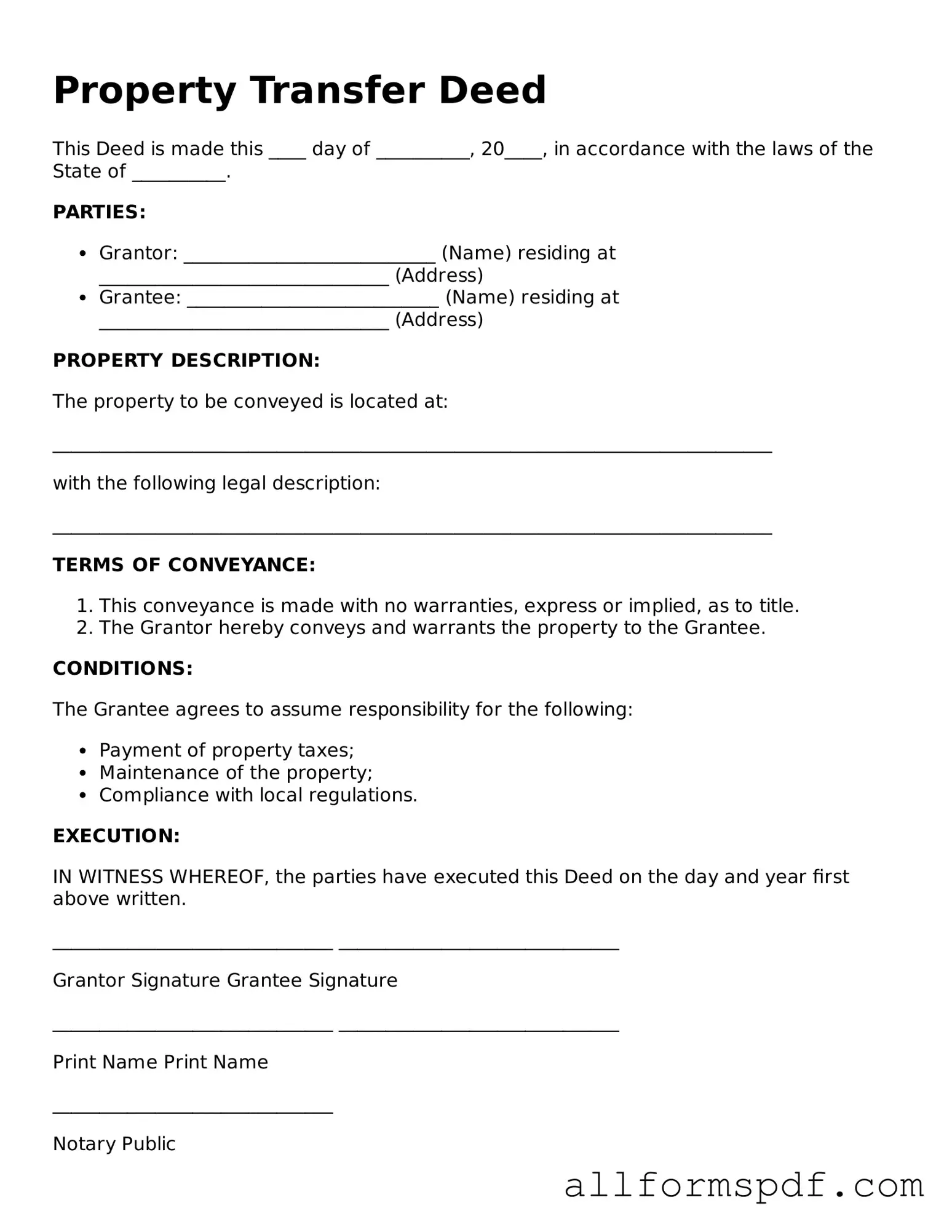Filling out a Deed form can be a straightforward process, but many people make common mistakes that can lead to complications down the road. One frequent error is failing to include all necessary parties. When transferring property, it’s essential to list every owner involved in the transaction. Omitting a co-owner can create legal issues later, especially if that person disputes the transfer.
Another mistake often seen is using incorrect or outdated property descriptions. A Deed must accurately describe the property being transferred, including its legal description. If the description is vague or inaccurate, it can lead to disputes over property boundaries or ownership rights. Always ensure that the description matches what is recorded in public records.
Many people also overlook the importance of signatures. A Deed typically requires the signature of the grantor, and in some cases, the grantee. If a signature is missing or not properly notarized, the Deed may be considered invalid. It’s crucial to double-check that all required signatures are present and that they are executed correctly.
Additionally, individuals sometimes forget to date the Deed. While it may seem minor, the date can be significant in establishing the timeline of ownership. A missing date can lead to confusion about when the transfer took place, which may affect tax obligations or other legal matters.
Another common error is neglecting to record the Deed after it has been signed and notarized. Recording the Deed with the appropriate local government office is essential for protecting ownership rights. Without this step, the transfer may not be recognized legally, leaving the new owner vulnerable to claims from others.
Finally, some people fail to seek legal advice when necessary. While it’s possible to fill out a Deed form independently, consulting with a legal expert can help ensure that everything is completed correctly. A knowledgeable attorney can provide guidance tailored to individual circumstances, potentially saving time and money in the long run.
